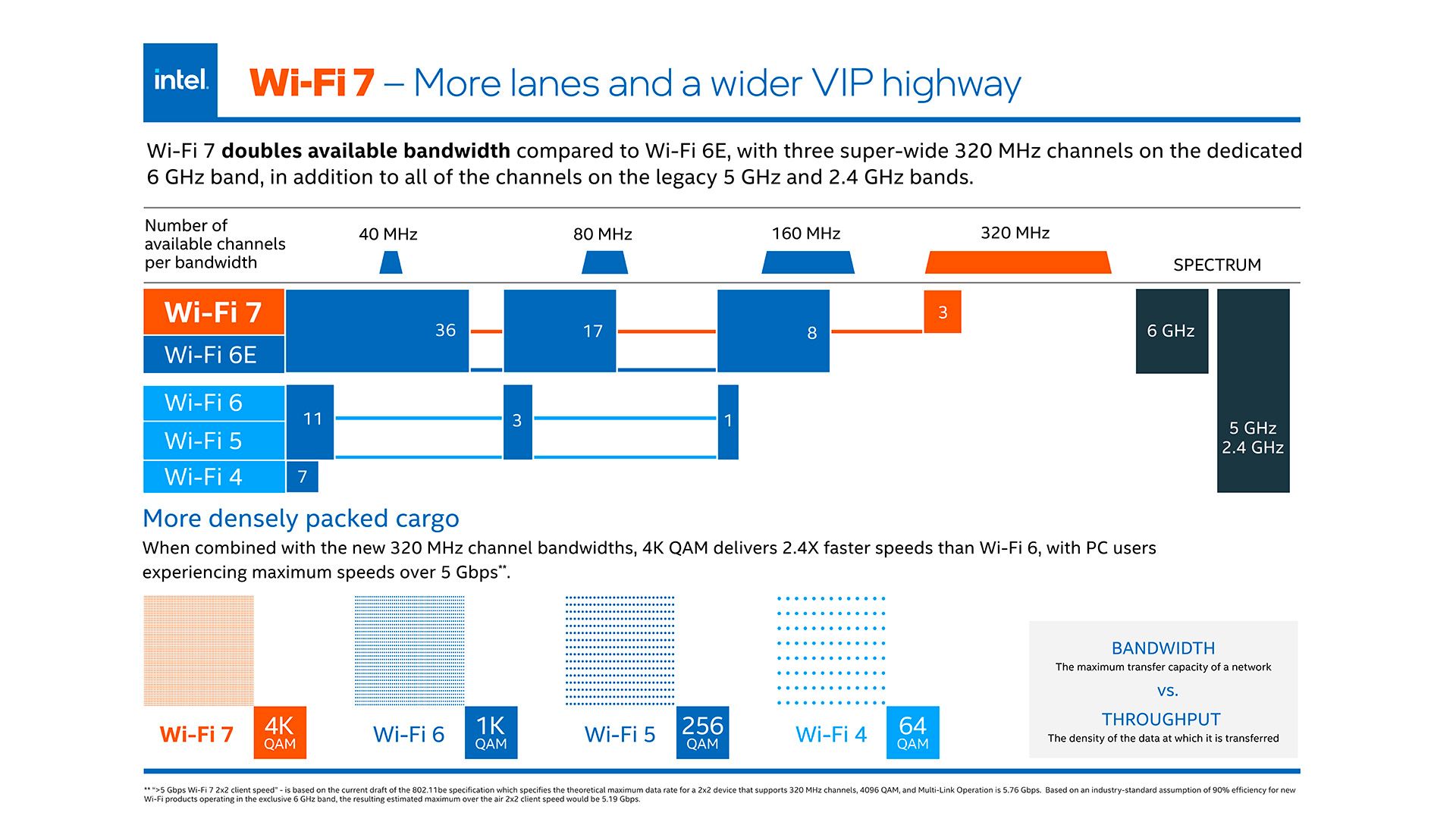Most of our lives happen online, so it’s no surprise that the companies behind our Wi-Fi are racing toward the next generation of wireless connectivity with Wi-Fi 7. Wi-Fi 7 isn’t just about making it faster. The same spectrum we’ve been using for years. Wi-Fi 7 makes better use of the 2.4GHz, 5GHz, and 6GHz spectrum to deliver faster maximum speeds, lower latency, and more efficient use of available bandwidth.
While a few Wi-Fi 7 devices are starting to burst onto the scene from companies like OnePlus, it’s still far from widespread adoption. Wi-Fi 7 routers are set to be available in 2023 and will be essential to providing multi-gigabit speeds to our devices. Internet providers are scrambling to upgrade their services with multi-gigabit options and Wi-Fi 7 will be the key to making that speed truly usable.
What is Wi-Fi 7?
Wi-Fi 6E introduced the world to 6GHz Wi-Fi using Wi-Fi 6 technology and the results are good with massive reserves of spectrum helping users avoid wireless congestion. Wi-Fi 7 or 802.11be takes things a step further with several major technology improvements. First of all, Wi-Fi 7 routers can use 320MHz wide channels at 6GHz compared to 160MHz with Wi-Fi 6E. like demonstrated by IntelWi-Fi 7 routers will have up to 36Gbps bandwidth at their disposal with up to 5.8Gbps that can be delivered to devices such as computers. That’s up from 9.6Gbps on the router and 2.4Gbps on the device using Wi-Fi 6E.
These speeds may seem excessive, but our needs will continue to grow as the cloud continues to be integrated into our workflows. It’s also worth noting that while the 6GHz bands on the best Wi-Fi routers are largely vacant at the moment, they will gradually gain customers as 5GHz Wi-Fi did. Fortunately, Wi-Fi 7 has a few tricks up its sleeve to deal with this surge in users starting with QAM, or Quadrature Amplitude Modulation.
QAM increases the amount of data that can be compressed into a band by modulating the signal. Wi-Fi 6 supports 1024-QAM compared to 256-QAM on Wi-Fi 5. Wi-Fi 7 takes this up to 4096-QAM, or 4K-QAM, which makes more efficient use of available spectrum. This wasn’t cheap and required beamforming for it to work, but the work was worth it with much higher throughput using the same spectrum as Wi-Fi 6.
Multi-link operation allows a Wi-Fi client to connect to multiple bands simultaneously, which can improve latency if one band becomes congested and can also improve speed. Instead of being bogged down with one inefficient band, traffic can be sent through any band in a two-channel setup to keep traffic moving smoothly and quickly.
Multiple Source Units, or Multi-RU, are capable of using unused portions of channels. Before that, if any part of a channel was in use, the entire channel was unusable by another device. Multi-RU allows multiple subchannels to be used together. If 40MHz of the 320MHz channel is being used, for example, the Multi-RU hole allows the remaining 280MHz to be used for something else.
All of this, and much more, come together to make Wi-Fi 7 faster than Wi-Fi 6E using the same spectrum. Wi-Fi 7 is very much about making the most efficient use of available spectrum, so there is as little waste as possible.
When will Wi-Fi 7 be available?
Wi-Fi 7 is already included with a few devices like the latest OnePlus 11 and ROG Phone 7 Ultimate. Unfortunately, a phone, even a fairly high-end one, won’t be able to take full advantage of Wi-Fi 7. Laptops and desktop computers will allow us to really benefit from increased speeds with file transfers or low-latency broadcasts. .
Routers are set to be available from June 2023 from TP-Link, with ASUS, Netgear, and others on board. These routers will be equipped with multifunctional wired WAN connections such as 10Gbps Ethernet or SFP+ so they can deliver the promised multifunctional network speeds.
TP-Link launches with a total capacity of BE19000 Tri-Band or 19Gbps. TP-Link also has a high-speed quad-band model, the BE24000, and a tri-band, low-speed model, the BE9300. Naturally, these companies are also working on mesh routers that can use Wi-Fi 7’s massive bands as a mesh backing device.
It will be years before most people upgrade to devices that can use Wi-Fi 7, but it also means that early adopters will have access to almost all vacant 6GHz spectrum while most people still share 5GHz. It also means that users can remove some traffic from 5GHz, which could improve speeds for older Wi-Fi 6 devices that can’t be upgraded, like the PS5. If you’re ready to move to Wi-Fi 7, look out for routers starting in the summer of 2023 with more options available later in the year.
[ad_2]





